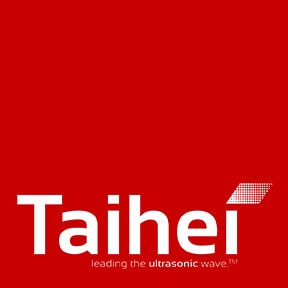LIQUID PROCESSING - INDUSTRIES SERVED
Chemistry
Ultrasonics is used in analytical chemistry for many common procedures, including breaking of chemical bonds, formation of free radicals, polymersion and deplymerization of long-chain molecules, catalysis of reactions (e.g. reduction, alkylation, ester hydrolysis and acylation or aromatics), preparation of catalyst, and activation of catalyst. The science of sonochemistry is well characterized and employed throughout the world.
Biology
Ultrasonics is commonly used for the releasing of enzymes and proteins from cells. This method of extraction commonly produces more active material than other methods. Disruption is often very fast and complete. In biotechnology, the manufacturing of products such as enzymes, fine chemicals, and therapeutic reagents requires the fermentation of microorganisms. The use of ultrasonics has been used in these instances for cell disruption as well enzyme purification. It helps in the lysing of bacteria, viruses, yeast and tissue cells for the extraction of protein, DNA, RNA, enzymes and other cellular components. The cup horns are high-intensity water baths that allow ultrasonic processing while preventing samples cross-contamination.
Industrial
Many industrial applications require high volumes of liquids to be emulsified, dispersed, homogenized, and degassed while in the process line. This can be accomplished through the use of a continuous flow cell for in-line processing.
Pharmaceutical
The pharmaceutical industry routinely uses ultrasonics for processes such as sample premixing, dispersion and suspension, crack enteric coatings for dissolution testing, tablet pressing operations to reduce tablet size, and degassing and homogenization of slurry in production. The continuous flow cell is a popular accessory for processing larger volumes up to 20 liter/hour.
Environmental
Environmental testing laboratories use liquid processors to process soil and sediment samples according to U.S. EPA methods (U.S. EPA test Method 3550). This is done in lieu of Soxhlet extraction methods due to significant time and material savings. Utilizing probe ultrasonics can save hours of costly sample extractions.
Common Applications
Atomization - forming a mist from a liquid
Deagglomerate - to break the attractive bonds between particles
Defloculate - to break electrostatic bonds between fibers
Degassing - to remove entrained and dissolved gasses from a liquid
Dispersion - to homogenize a sample
Cell disruption - to break apart
Homogenization - to reduce an unorganized combination of materials into a uniformed mixture of suspension
Sonochemistry - the acceleration of a chemical reaction by application of ultrasonic energy
Communitation - to grind or tear
Emulsification - the blending of two samples
Cell lysing - to erode the cell walls
Disaggregation - to break apart
Catalysis - acceleration of a chemical reaction induced the presence of material that is chemically uncharged at the end of the reaction
Extraction - the process of obtaining something from a mixture or compound by chemical or physical or mechanical means
Synthesis - the combining of separate elements or substances to form a coherent whole
Hydrolyzation - a chemical reaction in which water reacts with a compound to produce other compounds; involves the splitting of a bond and the addition of the hydrogen action and the hydroxide anion from the water
ELISA - a sensitive immune assay that uses an enzyme linked to an antibody or antigen as a marker for the detection of a specific protein, especially an antigen or antibody. It is often used as a diagnostic test to determine exposure to a particular infectious agent; such as the AIDS virus, by identifying antibodies present in a blood sample
Mixing - to combine or blend into one mass or mixture
Cleaning - dislodge a foreign matter from an object.
Deagglomerate - to break the attractive bonds between particles
Defloculate - to break electrostatic bonds between fibers
Degassing - to remove entrained and dissolved gasses from a liquid
Dispersion - to homogenize a sample
Cell disruption - to break apart
Homogenization - to reduce an unorganized combination of materials into a uniformed mixture of suspension
Sonochemistry - the acceleration of a chemical reaction by application of ultrasonic energy
Communitation - to grind or tear
Emulsification - the blending of two samples
Cell lysing - to erode the cell walls
Disaggregation - to break apart
Catalysis - acceleration of a chemical reaction induced the presence of material that is chemically uncharged at the end of the reaction
Extraction - the process of obtaining something from a mixture or compound by chemical or physical or mechanical means
Synthesis - the combining of separate elements or substances to form a coherent whole
Hydrolyzation - a chemical reaction in which water reacts with a compound to produce other compounds; involves the splitting of a bond and the addition of the hydrogen action and the hydroxide anion from the water
ELISA - a sensitive immune assay that uses an enzyme linked to an antibody or antigen as a marker for the detection of a specific protein, especially an antigen or antibody. It is often used as a diagnostic test to determine exposure to a particular infectious agent; such as the AIDS virus, by identifying antibodies present in a blood sample
Mixing - to combine or blend into one mass or mixture
Cleaning - dislodge a foreign matter from an object.
